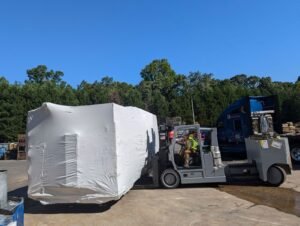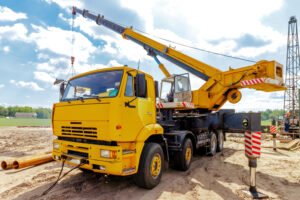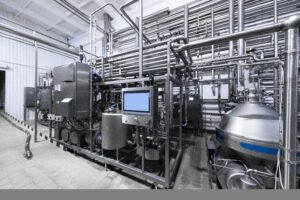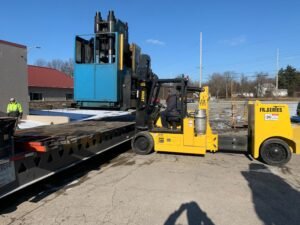Scheduled maintenance, also known as planned maintenance, is a proactive approach to equipment and machinery upkeep. It involves regularly scheduled inspections, servicing, and repairs to prevent unexpected breakdowns and ensure optimal performance. This comprehensive guide will delve into the various aspects of scheduled maintenance, its benefits, implementation strategies, and best practices to enhance industrial operations.
What is Scheduled Maintenance?
Scheduled maintenance refers to the systematic process of maintaining equipment and machinery at predetermined intervals. These intervals are based on time, usage, or specific criteria to prevent failures and extend the lifespan of the assets. Unlike reactive maintenance, which addresses issues as they arise, scheduled maintenance aims to identify and resolve potential problems before they cause significant disruptions.
Importance of Scheduled Maintenance
1. Minimizing Downtime: Scheduled maintenance helps reduce unplanned downtime, ensuring that equipment operates smoothly and efficiently.
2. Cost Savings: By preventing major breakdowns, scheduled maintenance can save significant costs associated with emergency repairs and production losses.
3. Safety Enhancement: Regular maintenance ensures that equipment functions safely, reducing the risk of accidents and injuries.
4. Longevity of Equipment: Proper maintenance extends the life of machinery, maximizing the return on investment.
Benefits of Implementing Scheduled Maintenance
Implementing scheduled maintenance offers numerous advantages that contribute to the overall efficiency and productivity of industrial operations.
Increased Equipment Reliability
Regular inspections and servicing help identify and address potential issues before they escalate, ensuring that equipment operates reliably. This reliability minimizes the likelihood of unexpected failures, leading to more consistent production output.
Improved Productivity
Scheduled maintenance minimizes downtime, allowing operations to run smoothly. With well-maintained equipment, employees can focus on their tasks without interruptions, leading to increased productivity and efficiency.
Cost Reduction
By addressing minor issues before they become major problems, scheduled maintenance reduces the need for costly emergency repairs. Additionally, well-maintained equipment operates more efficiently, consuming less energy and reducing operational costs.
Enhanced Safety
Regular maintenance ensures that equipment meets safety standards and operates as intended. This reduces the risk of accidents and injuries, creating a safer work environment for employees.
Prolonged Equipment Lifespan
Consistent maintenance helps prevent wear and tear, extending the lifespan of equipment. This reduces the need for frequent replacements and maximizes the return on investment.
Key Components of a Scheduled Maintenance Program
A successful scheduled maintenance program involves several key components that work together to ensure effective implementation and management.
- 1. Inventory Management:Maintaining an accurate inventory of equipment and spare parts is crucial for effective scheduled maintenance. This includes tracking the condition, usage, and maintenance history of each asset.
- 2. Maintenance Scheduling: Developing a detailed maintenance schedule is essential. This schedule should outline the frequency and type of maintenance tasks for each piece of equipment based on manufacturer recommendations, usage patterns, and historical data.
- 3. Work Orders: Creating and managing work orders is a fundamental aspect of scheduled maintenance. Work orders provide detailed instructions for maintenance tasks, including the tools and materials needed, ensuring that technicians can perform their duties efficiently.
- 4. Documentation and Record-Keeping: Accurate documentation and record-keeping are vital for tracking maintenance activities, identifying trends, and making informed decisions. This includes maintaining records of inspections, repairs, and parts replacements.
- 5. Training and Skill Development: Investing in the training and skill development of maintenance personnel is essential for the success of a scheduled maintenance program. Technicians should be equipped with the knowledge and skills needed to perform maintenance tasks effectively.
Developing a Scheduled Maintenance Plan
Creating a comprehensive scheduled maintenance plan involves several steps that ensure all aspects of maintenance are covered.
Step 1: Asset Inventory
Begin by compiling a detailed inventory of all equipment and machinery. Include information such as make, model, age, usage, and maintenance history.
Step 2: Determine Maintenance Intervals
Based on manufacturer recommendations, historical data, and usage patterns, determine the appropriate maintenance intervals for each piece of equipment. Consider factors such as operating conditions, criticality, and failure history.
Step 3: Create Maintenance Checklists
Develop checklists for each maintenance task, outlining the specific steps to be followed. Include details such as tools required, safety precautions, and expected outcomes.
Step 4: Schedule Maintenance Tasks
Using a computerized maintenance management system (CMMS) or other scheduling tools, create a detailed maintenance schedule. Assign tasks to specific dates and times, ensuring that they are evenly distributed to avoid overloading maintenance personnel.
Step 5: Allocate Resources
Ensure that the necessary resources, such as tools, spare parts, and personnel, are available for each scheduled maintenance task. This may involve coordinating with procurement and inventory management teams.
Step 6: Implement and Monitor
Execute the scheduled maintenance plan, closely monitoring its progress. Use key performance indicators (KPIs) such as mean time between failures (MTBF) and mean time to repair (MTTR) to assess the effectiveness of the maintenance program.
Step 7: Review and Improve
Regularly review the scheduled maintenance plan to identify areas for improvement. Gather feedback from maintenance personnel and use data analytics to refine the plan, ensuring continuous improvement.
Best Practices for Scheduled Maintenance
Implementing best practices can significantly enhance the effectiveness of a scheduled maintenance program.
1. Utilize Technology: Leverage advanced technologies such as CMMS, predictive maintenance tools, and IoT sensors to streamline maintenance processes, monitor equipment health in real-time, and predict potential failures.
2. Conduct Regular Audits: Regularly audit the scheduled maintenance program to ensure compliance with standards and identify areas for improvement. Audits can help uncover inefficiencies and provide insights into optimizing maintenance processes.
3. Foster a Maintenance Culture: Promote a culture of maintenance within the organization by emphasizing the importance of regular upkeep and encouraging proactive maintenance practices. This involves training employees, recognizing their efforts, and fostering collaboration between departments.
4. Analyze Data: Collect and analyze data from maintenance activities to identify trends, root causes of failures, and opportunities for improvement. Data-driven insights can guide decision-making and help optimize maintenance schedules.
5. Prioritize Safety: Safety should always be a top priority in maintenance activities. Ensure that all maintenance tasks are performed following safety protocols and that employees are trained in safe work practices.
6. Collaborate with Suppliers: Maintain strong relationships with equipment suppliers and manufacturers. Collaborating with them can provide valuable insights, technical support, and access to the latest maintenance practices and technologies.
Common Challenges and How to Overcome Them
Despite its numerous benefits, implementing a scheduled maintenance program can present challenges. Understanding and addressing these challenges is crucial for success.
1. Resistance to Change
Employees may resist changes to maintenance practices, particularly if they are accustomed to reactive maintenance. Overcome this resistance by involving employees in the planning process, providing training, and clearly communicating the benefits of scheduled maintenance.
2. Resource Constraints
Limited resources, such as budget, personnel, and spare parts, can hinder the implementation of a scheduled maintenance program. Address this by prioritizing critical equipment, optimizing inventory management, and seeking management support for necessary investments.
3. Inaccurate Data
Inaccurate or incomplete data can lead to ineffective maintenance schedules and missed tasks. Ensure data accuracy by implementing robust data collection processes, regularly updating records, and leveraging technology for real-time monitoring.
4. Maintenance Backlog
A backlog of maintenance tasks can accumulate if the scheduled maintenance program is not properly managed. Prevent this by balancing maintenance schedules, regularly reviewing workloads, and adjusting resources as needed.
5. Coordination Challenges
Coordinating maintenance activities with production schedules can be challenging. Improve coordination by fostering communication between maintenance and production teams, using scheduling tools, and planning maintenance during off-peak hours.
Conclusion
Scheduled maintenance is a vital component of effective industrial operations. By proactively maintaining equipment and machinery, organizations can minimize downtime, reduce costs, enhance safety, and prolong the lifespan of their assets. Implementing a comprehensive scheduled maintenance program, leveraging technology, and following best practices can significantly improve operational efficiency and productivity. Embrace the benefits of scheduled maintenance and take a proactive approach to equipment upkeep for a more reliable and efficient industrial environment.
















